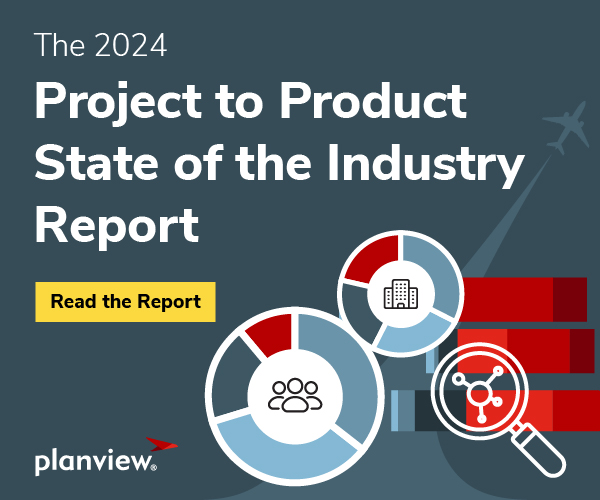
Our recently published Évaluation de la maturité pour le passage du projet au produit gives organizations a framework to assess the progress of this massive undertaking. By answering seven easy multiple-choice questions, they find out where they are in their journey and get recommendations on how to advance.
As we started collecting responses, we realized how lucky we are to have a front-row seat to the digital transformations underway at some of the world’s largest enterprises. And as we dug a little deeper, we noticed some trends. Naomi Lurie, VP of Product Marketing, and Carmen DeArdo, Senior Director, VSM Research and Design, recently hosted a webinar to discuss what the Maturity Assessment reveals about the challenges of shifting a traditional IT organization to a product operating model.
Watch The 7 Dimensions of a Project to Product Transformation on demand!
How is the shift from project to product going? Early findings.
78% of respondents—a significant majority— haven’t yet fully operationalized their transition to a product-based operating model. They report themselves to be in either Stage 1: Starting Out, Stage 2: Experimentation, or Stage 3: Expansion. While the efforts are positive signs in and of themselves, enterprises don’t fully capture the ROI until new patterns are operationalized in Stage 4. So why is it so hard to get there?
We have two hypotheses:
- Gaining buy-in to experiment in small areas is proving far easier than expanding those efforts across silos;
- Broad expansion est possible, but takes longer than anticipated, particularly when you take into account ingrained dependencies, complex regulatory environments, and longstanding established processes.
Depuis the project to product shift is a multi-year process, it can be easy for organizations to get disoriented and lose their way. As the Maturity Assessment results show, progress is uneven across the seven dimensions of the change required to reach maturity.

The seven dimensions of change in the shift from project to product
For example, a large financial institution can be making great strides in managing its backlogs and prioritization but is still unable to react quickly to market changes, limited by a handful of highly governed release windows each year.
If you, like so many of your peers, find yourself in the initial stages of a project to product transformation, we have some advice on how to accelerate your efforts.
Curious about where you are in your Project to Product journey?
Take the Maturity Assessment today.
Moving beyond experimentation
Organizations that have begun to move from traditional project-based models to a product-centric approach may find themselves struggling to move past the Experimentation phase. If you find yourself here, there are a few key steps you can take to give the experiment a solid foundation for moving forward.
- Define success in advance and establish it upfront. Making it measurable is the key.
- Experiment with a product that goes from Ideation all the way through to Deployment and Support, preferably with a single Product Owner for all stages. That way, you’ll see the impact of your changes at each stage of the product lifecycle.
- Map and manage time from your customer’s perspective; internal metrics may measure the number of story points completed or deployments per day, but customers don’t care about these internal checkpoints.
- Understand the dependencies, including your shared internal and platform teams.
- Make the improvement work itself visible so your leaders understand the level of effort it takes to create this change when expansion begins.
Expanding across the organization
A common mistake is to rush into Expansion before you’ve written a good solid playbook for other product teams to use. It may seem counterintuitive, but make sure you have deep learnings and repeatable patterns before trying to put others through the same transition. If you’re having trouble gaining traction as you stretch your boundaries, you may find some of these tips useful.
- Maximize learnings and establish good patterns before you expand;
- Make sure to consider internal and platform products. Your customer-facing products depend on these, and can’t advance without addressing these dependencies. Take the time to work through a deep slice of your product portfolio in this phase;
- Tell stories to drive culture change; share your successes, your challenges and your learnings to bring attention to your efforts and build momentum;
- Get your leaders’ attention by tying your results to the business metrics that matter to them, whether that is top-line revenue, cost savings, talent retention, or others.
Culture is the key
As with any large-scale change efforts, culture is the key. The paradox is that although people desire change, they resist it at the same time. A shift from project to product introduces risk and uncertainty, and how organizations manage the human element can make or break their efforts. A few things to remember when you’re dealing with culture change:
- Ensure all team members are included—transformation isn’t just for the cool kids!
- Make it easier to do things differently, not harder. Don’t slow experimentation down with red tape;
- Prepare for fixed mindsets and don’t be critical of the current state. Remember, it got you where you are today;
- Don’t dismiss people’s good ideas just because you’re not ready for them. Experiment where you can and keep them on a backlog.
Le passage d'un projet à un produit est un parcours complexe qui s'étend sur plusieurs années et qui peut prendre encore plus de temps que vous ne le pensiez. L'objectif est de continuer à progresser dans toutes les dimensions nécessaires du changement et de passer progressivement d'une étape à l'autre. Watch the full webinar to understand the five stages of this transition and learn how you can keep your team moving toward a product-based approach.




